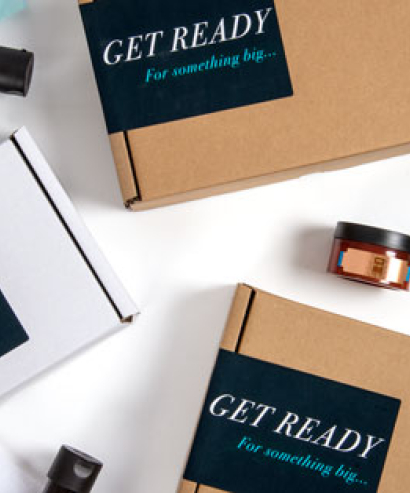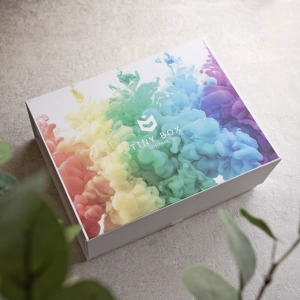
Social media is now an important part of a marketing strategy for any business, with platforms like X (formerly Twitter), Facebook, Instagram, and TikTok now having billions of users between them. It’s not hard to see the benefit they can therefore have when it comes to promotion, but simply having a presence on social media isn’t enough - you also need to have effective social media marketing strategies.
Here, we explore some of the top social media tips to boost engagement, generate sales, and increase awareness of your brand.
- Find your target audience
Your target audience on social media will consist of the people who are most likely to be interested in your products, so by understanding their preferences you can create content that resonates with them and therefore drives engagement.
Research the demographic of your customer base, such as age, gender, and location, as well as their interests, hobbies, and pain points. You can then address these in your social media posts and present them with solutions.
Your research should also involve finding out which social media platforms your customers are most active on, as then you can focus on these and tailor your content to ensure you’re using them effectively. For example, if your customers are predominantly young adults, platforms like Instagram and Snapchat may be more effective, but if you’re targeting professionals and businesses, LinkedIn may be the best choice.
This will also influence the type of content you create, as more visual posts, like images and short-form videos, will be better suited to platforms like Instagram, while industry-related content may perform better on LinkedIn and X (Twitter).
- Establish clear goals
It’s important for businesses to have clear marketing goals, and these will also help you plan your social media strategy. Say one of your marketing goals is to increase your brand awareness - you could try to reach a certain number of followers or generate a specific number of impressions on your social media platforms.
For example, host regular contests or giveaways where followers can enter by liking, commenting, tagging friends, or sharing your posts. Reward your customers with exclusive discounts, promotions, or giveaways that are only available to those who engage with your accounts.
Run ad campaigns, and partner with influencers, other brands, or even your own customers for collaborations and shoutouts, which can help expand your reach and introduce your brand to new audiences. User-generated content boosts your brand’s visibility and is another great way to build credibility among your followers, as it shows how your existing customers are using your products.
Visual content like images, videos, infographics, and GIFs can also significantly increase how much your posts are shared, and you can incorporate colours that match your company’s branding to increase awareness and ensure consistency across all your marketing materials.
Check out our blog post on colour psychology and its impact on packaging for more on how different colour choices can influence your customers’ emotions and behaviours.
And for more marketing tips and trends for your business, check out our blog post here.
- Create a content calendar
Having a cohesive plan across all of your marketing efforts will help you stay organised and focused, and should apply to your social media strategy too. Define your brand's voice and tone and develop a plan that includes the types of content you want to create, the frequency of posting, and the platforms you’ll use.
Use polls and surveys on your social media platforms to conduct regular research to understand your audience better. These are a great way to interact with your customers, while providing you with feedback and insights on their preferences all while driving engagement. Also host live Q&A sessions where followers can ask questions about your products, packaging, or your brand in general.
Posting at the right time can also significantly impact the reach and engagement of your posts. For example, posting around midday/early afternoon will reach people on their lunch breaks, and content posted during peak travel times is likely to be seen by commuters. Plan your topics in advance and schedule them - this will ensure you’re posting regularly and will also save you time.

- Keep up with analytics
Managing multiple social media platforms can be time-consuming and overwhelming, so take a look at how different tools can help you automate and simplify your tasks. There are a variety of options available that can schedule posts, monitor engagement, analyse performance, and manage multiple accounts from a single dashboard.
Social media analytics tools can also help you track the performance of your social media platforms, analysing metrics like engagement rates, click-through rates, and demographic insights to help you understand your audience better.
Tools like Google Analytics can help you keep track of page views, engagement rates, and user activity, giving you a better insight into how your website is performing. Other tools to check out include Hootsuite, which helps with scheduling, content creation, and analytics, and Later, which provides you with audience and engagement data to see which posts are working, and which ones aren’t.
You can then gain insights into what’s working and what needs improvement, and by regularly reviewing these analytics you can identify patterns in user behaviour to tailor future campaigns.
- Be responsive
Many customers now shop online, so it’s important to humanise your online presence to foster connections with your audience. This can help build trust and differentiate yourself from your competitors.
One way to do this is by showcasing the people behind your brand, for example by introducing your team members on your social media and highlighting their expertise. Share behind the scenes glimpses of your team, the production process, or day-to-day operations. Prioritise customer service on social media by responding quickly to customer messages and addressing any concerns promptly.
Emojis are also a popular form of communication on social media, adding personality, emotion, and a touch of playfulness to your posts. Experiment with different emojis to convey different emotions or messages but be careful not to overuse them, as too many can make your posts appear unprofessional.
- Stay on trend
Stay up to date on what topics and memes are trending on social media so you can create content that’s always relevant. Get the whole team involved in making fun videos showcasing behind the scenes content, further engaging with your audience and adding a touch of playfulness to your social media.
Hashtags also play a big role in expanding the visibility of your social media content, helping customers discover your posts. Again, it’s important to strike a balance as using too many hashtags can make your posts appear as spam, but using too few may limit the visibility and reach of your content. The optimal number of hashtags to use varies for different social media platforms - for example on X (Twitter) go for 1-2, for Facebook 2-3, for Instagram and TikTok between 3-5, and LinkedIn anything between 1-5.
Also make sure to choose relevant hashtags that are popular within your industry or niche, and research trending hashtags and incorporate them into your posts when relevant - but avoid using overly generic hashtags that are highly competitive and may drown out your content. Again, tools like Hootsuite and Later can be used to generate hashtags, but make sure to have a look around to see what other platforms are available.
In conclusion
Social media can’t be ignored in today’s world, so it’s vital to make sure you’re using it effectively for your brand’s marketing. Want more business marketing tips? Join the Tiny Box Clinic - a space for small business owners to connect, learn, and comment.
































